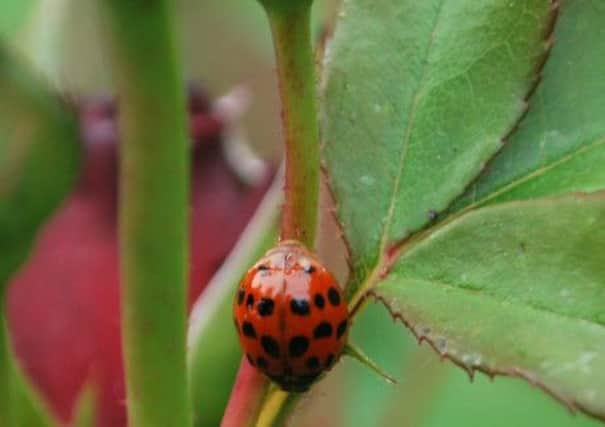Researchers’ plea over STD-suffering ladybirds


A team of Scottish scientists have called for the public’s help in mapping the spread of a sexually transmitted fungal epidemic increasingly found in the species.
The insect fungus, which is passed on primarily through mating, has been found infecting the spotted invader.
Advertisement
Hide AdAdvertisement
Hide AdResearchers are eager to understand more about the infection amid concern it may impact on ladybird species native to these shores.
The harlequin, a larger insect than ordinary British ladybirds, has taken root throughout the UK after being imported from east Asia to Europe for commercial pest control of crops.
Unlike most other ladybirds, it does not stick to one type of food, feeding on other ladybird eggs and larvae as well as aphids and crops.
Studies have shown that the populations of seven out of eight UK ladybird species have declined over the five years following the arrival of the harlequin a decade ago.
However, scientists at the University of Stirling say the notorious harlequin - officially known as Harmonia axyridis - appears to be increasingly suffering from the Laboulbeniales fungal infection.
Staff at the institution’s school of biological and environmental sciences are working with the Centre for Ecology and Hydrology to survey the sharp rise of the epidemic, but have asked for the assistance of the public to look for ladybirds in their houses, sheds or in leaf litter.
One researcher at Stirling, Katie Murray, found that in London, the fungus is infecting a much higher proportion of harlequin ladybirds than had been previously seen.
She said: “The cold conditions at this time of year mean ladybirds huddle together in leaf litter or other sheltered places like houses, sheds, garages, or other outbuildings.
Advertisement
Hide AdAdvertisement
Hide Ad“Checking for these groups of ladybirds is a good way to have a look for the fungus, which leaves little yellow bristles growing on their bodies. Many ladybirds will have only a few of the bristles, so people will have to look carefully.”
Records from the public will allow researchers to look at the extent and spread-rate of the epidemic. Previous studies have found the infection in a different species, the native two spot ladybird, particularly in London.
Ms Murray’s fellow researcher, Matt Tinsley, explained: “The study will allow us to know where this fungus has spread to and what proportion of native and invasive ladybirds are infected. This will contribute to ongoing research into the effects of parasites on this invasive alien ladybird.”